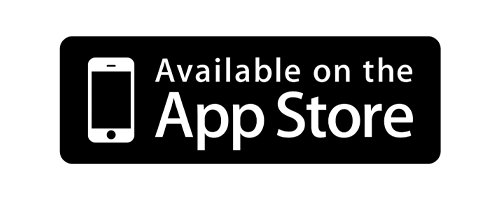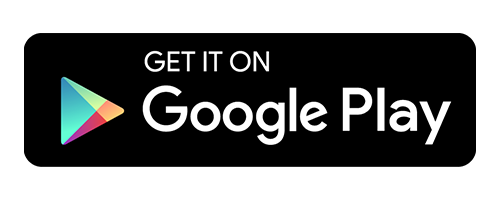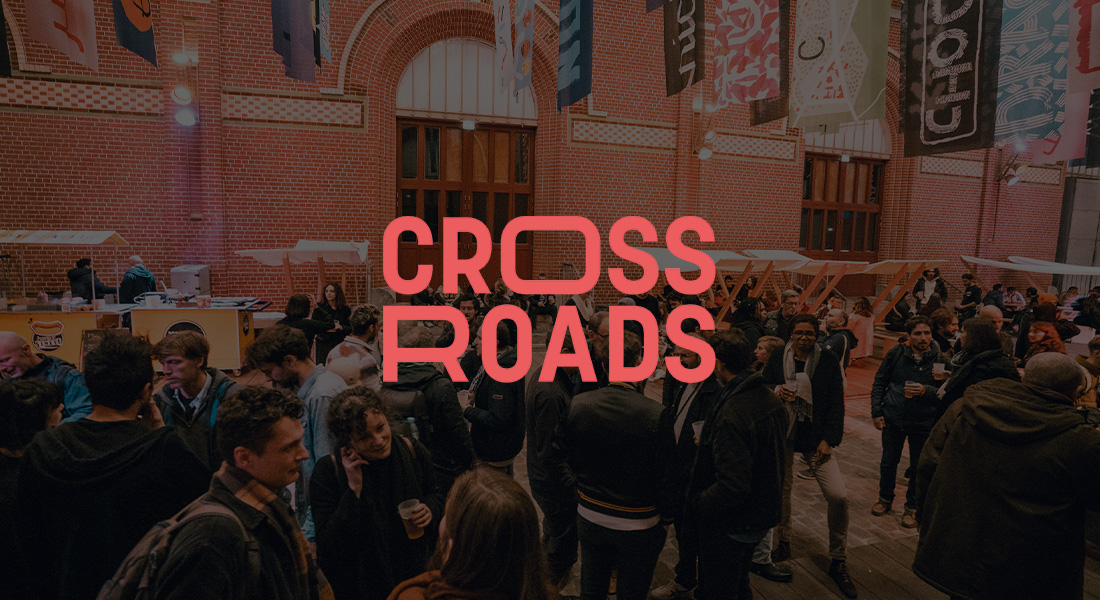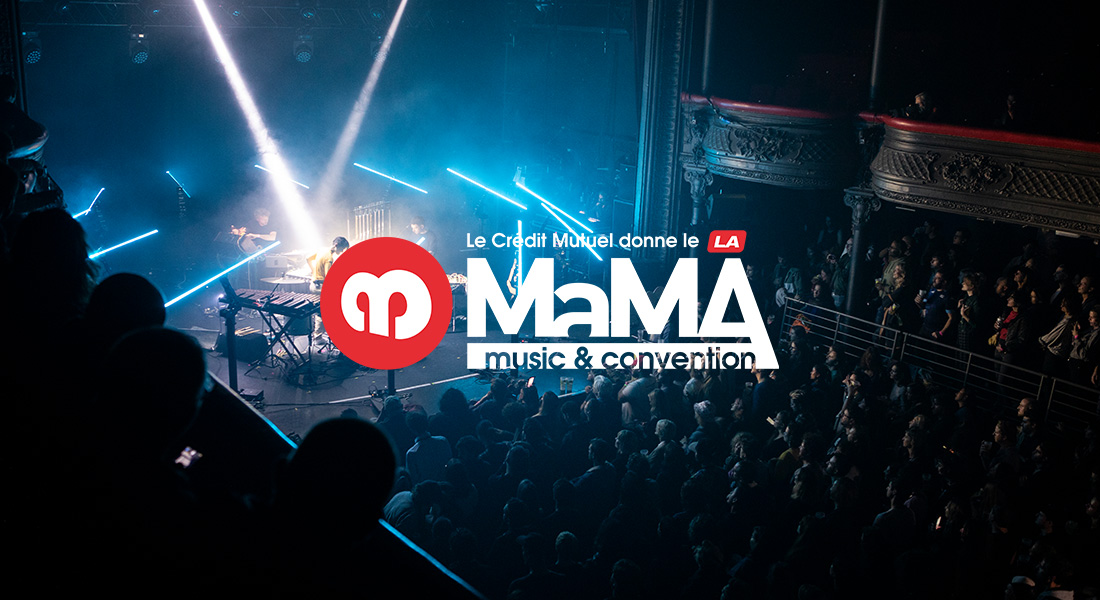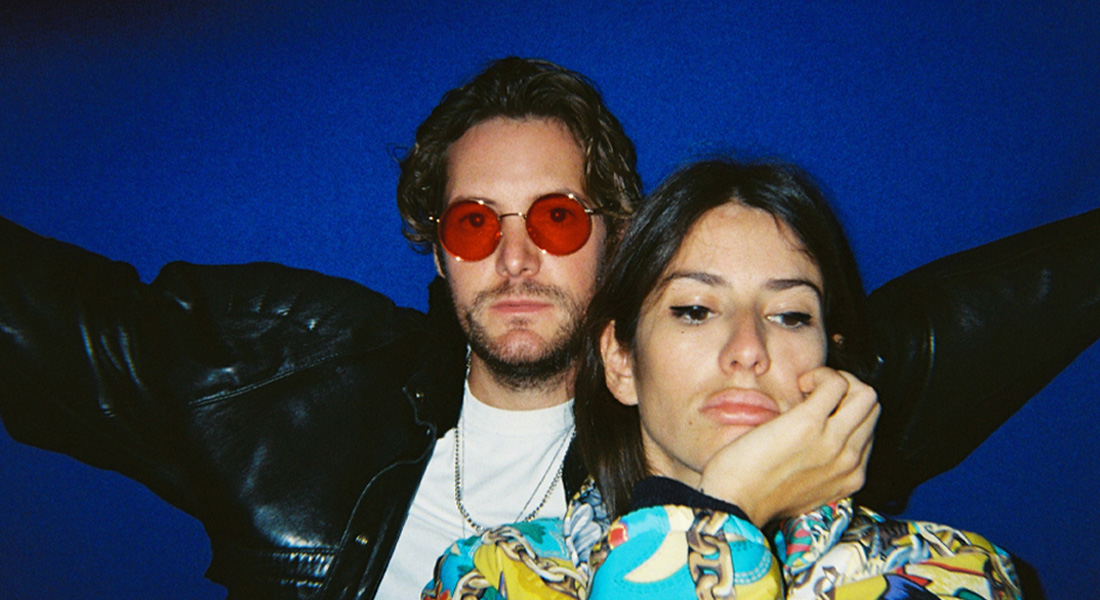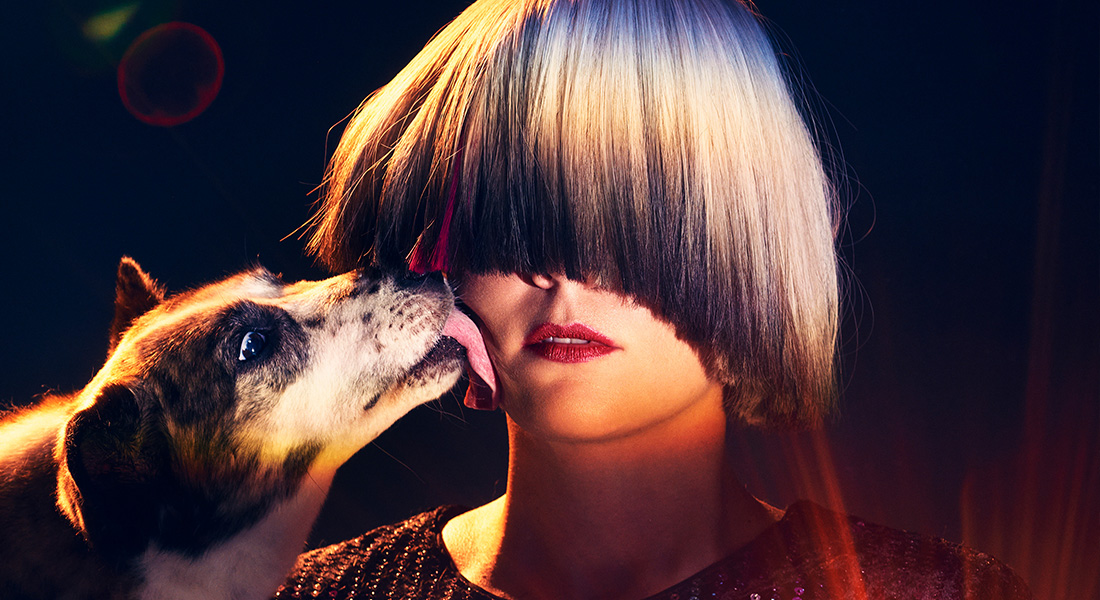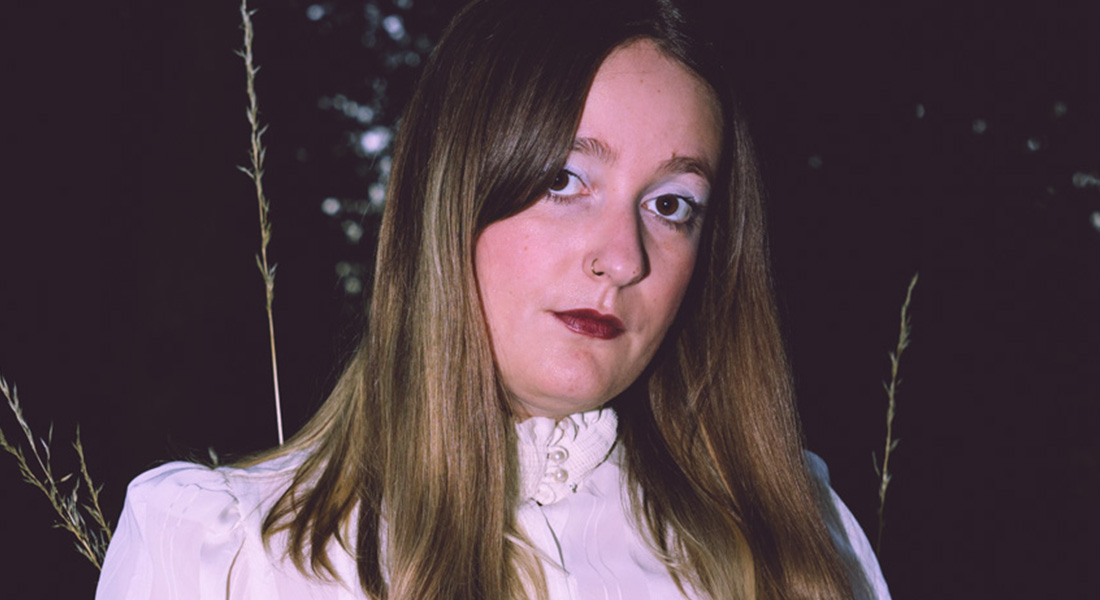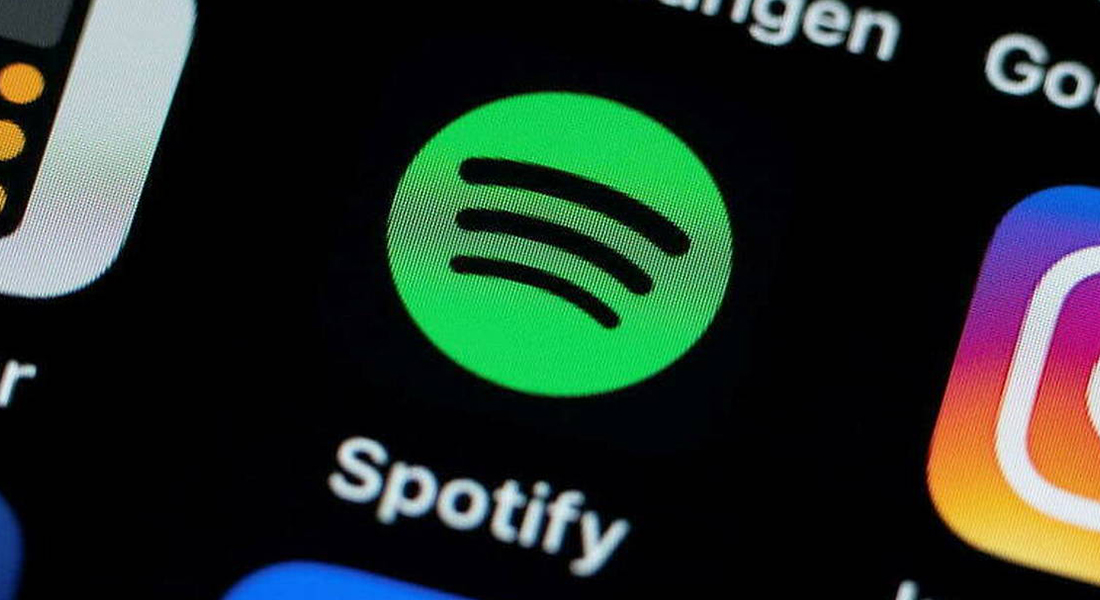We saw it last week in our music report on NFTs : NFTs are gaining momentum all over the world, especially within the creative industries – the music industry being part of it. While several platforms – such as Rarible, Opensea or Foundation – come out as leaders in the world of NFTs, in France, very few platforms allow artists to sell their art, and especially their music, as NFTs. This is however what Pianity is doing !
Pianity is an NFT marketplace that is entirely dedicated to selling limited editions of tracks by artists from all musical genres. With their will to put artists first and to develop a whole community around them and their NFTs, Pianity has been attracting more and more artists & labels, and for good reason. Why, you may ask ? Because the (very) large majority what every NFT sale has generated go directly to their respective owners, aka artists. On top of that, they have been working hard in order to create a community around their NFT drops, and it is starting to pay out !
To better understand the ever-growing sensation that is Pianity & its impact within the music industry, we’ve met David Duarte, a member of the Pianity team, in order to ask him a few questions.
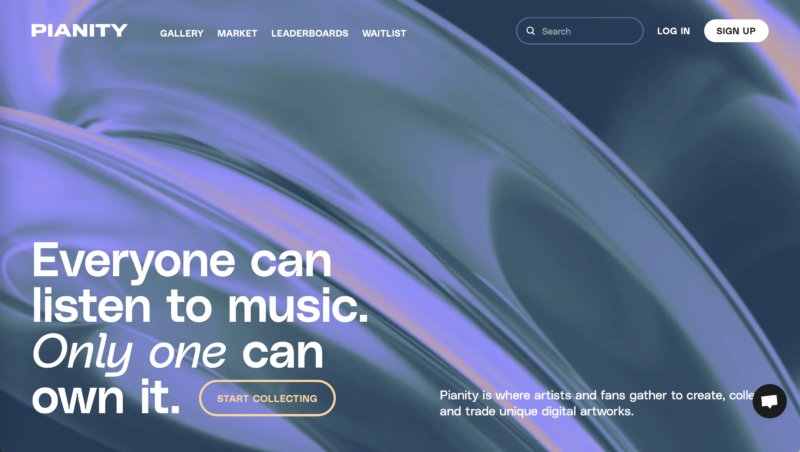
– screenshot of the homepage of Pianity’s NFT marketplace
hauméa : Hello David, and thank you for accepting to answer our questions today ! Before we start, could you tell us how Pianity was born and where the idea for an NFT marketplace came from ?
Pianity : So Pianity is an NFT music marketplace. Musicians can sell their tracks in limited editions there in a way that is “certified” by the blockchain technology. They can sell them in 1, 10, 100 or 1000 copies.
Pianity was born from the collaboration between Kévin Primicerio and Simon de Kinkelin – a music producer whose artist name is SHIMON – and the idea first came from the desire to upload Simon’s tracks on the blockchain in order for them to never be taken down, for them to be eternal, in a way.
With Pianity, we use a very specific blockchain called Arweave which allows data to be stored as well as the “smart contract” (a contract that proves you are the owner of a specific digital file, editor’s note) which links back to a digital file. Most NFTs are smart contracts, but this file is hosted on a traditional Internet server. Which means that if tomorrow your server goes down, the digital file you purchased will no longer be accessible. In our case, having the data and the smart contract stored on the blockchain – which is something that is called the permaweb (contraction of “web” and “permanent”, editor’s note) – makes NFTs eternal & forever accessible by their respective owner : they can never be deleted unless all the computers on the planet shut down and we no longer have access to the Internet.
Pianity was born in the middle of the pandemic ; it was born at the time where the artists’ income was becoming a huge issue… So we were wondering how to provide a new source of income to artists by using the blockchain. And from there emerged the idea of making an NFT marketplace. After an acceleration & development program of Arweave – the “open web Foundry” – and a beta test, we officially launched on July 13th, 2021.
hauméa : Just to clarify for the people who may not be accustomed to the blockchain verbttim, when you talk about “smart contracts”, what exactly are you talking about ? Is it a link that gives you access to the file you purchased ?
Pianity: Exactly. In fact, an NFT is only a “certificate of authenticity” that is unique and impossible to counterfeit, falsify or copy. For example : a bitcoin is a bitcoin. You can exchange it for another bitcoin, since they are essentially the same files. An NFT, however, is completely unique. The same way you will never trade a Picasso for the Mona Lisa, you cannot exchange an NFT with another NFT. That’s why it’s called a “non-fungible token”, because each NFT is unique and therefore has a unique value.
And this is why NFTs are such a revolution because they make us transition from web 2.0 to web 3.0. To go back in time : web 1.0 allowed you to access & read web pages. We have now moved on to web 2.0 which allows you to write, to contribute, to publish your pictures, your articles online. And now, the web 3.0 is the whole revolution blockchain has brought to the web : you can now own things online. That means, thanks to the NFT and the blockchain technology, that you are able to testify that this person owns this digital file. And because you can track who own which NFT, the owners can either keep or resell their NFTs.
hauméa : And what does it mean when you say that NFTs are “eternal” ? Some people say that what they have downloaded is in their computer or their hard drive, so it is already eternal !
Pianity : Well, everything is decentralized with the blockchain ! All of Pianity’s data is on all of the computers that are connected to Arweave. It is no longer stored on one single server. For example, your Instagram pictures are stored on Instagram’s server. If Instagram’s server was to go down tomorrow, you won’t have access to those photos anymore. This is why blockchain is such a revolution, it is because everything is decentralized, meaning it is everywhere. All of the computers are interconnected and therefore the data is and will always be accessible.
hauméa : To go back on Pianity : Pianity is a platform that allows artists to sell exclusive, limited editions of their tracks. But how exactly does the platform work ? How do you create and sell an NFT on Pianity ?
Pianity: Today we have 2 types of artist curation. We have been curating artists ourselves from the very beginning, but, since the end of November, we also have become what is called a DAO : a decentralized autonomous organization. That means that today Pianity partly belongs to its members : people who have bought NFTs on Pianity have earned tokens, and these tokens give them the right to vote & to decide what the next NFT drop will be.
Process-wise, artists today are free to upload their track on Pianity, and add the cover, update their profile, the links to their various social media profiles, etc. Their track then goes on a waiting list, and our token holders will vote for the next track that will be minted (uploaded and put up for sale, editor’s note) as an NFT. Right now, every day at noon and midnight, a track is being approved by the DAO.
hauméa : So this means that NFT drops are not uploaded automatically as soon as an artist decides to sell their tracks ? Is it possible not to see your track sold as an NFT then ?
Pianity : It’s indeed not guaranteed that a track will make its way to the marketplace, it depends on how many votes it has gotten, it depends on the promotion that the artist does, on the song… But we have increased the number of approved tracks as we go, and we will keep doing so as our community grows. For now, we are at 2 NFT votes per day, in addition to the drops that we handle directly with artists. This waiting list exists for a reason : it is meant for artists to promote their art to our community of collectors, investors, fans, and to their community as well in order to invite them to create an account on Pianity & to vote for their track.
And the more NFTs you have bought on Pianity, the more tokens you earn ; your number of votes depends on the number of tokens you’ve earned. And today, there are several ways to earn them. What we have chosen for the moment, is that our token cannot be bought. For now it is being given as cashback to the people who bought NFTs on Pianity because we believe that those who have decided to support artists on our marketplace are to be able to vote on our platform. In a few weeks, there will be other ways to earn our token, though.
hauméa : This means Pianity is not only an NFT marketplace, it’s a whole community !
Pianity : It is indeed a community. In fact, this is where it gets interesting : with the rise of the web 3.0, the whole Internet becomes a giant community. The idea for us is that Pianity will belong to all of its users.
And then, you also know that when you buy an NFT on Pianity, that 80% of the money you’re spending goes directly to the artist. We actually have three types of users on the marketplace : there are investors, aka people who will buy NFTs from an artist because they think that they are going to blow up in a few months or years and therefore that the NFT they bought for 20 euros will soon be worth 200, or 2000, because this very artist has become super famous.
You’ll also find have collectors who are buying NFTs in order to recreate their music library, the same way we used to buy CDs and vinyls back then.
And, finally, you have the fans who are there to support their artists, and who say to themselves “this is great, the 50€ that I am going to spend will go directly to my favorite artist”. It is not the case with your Spotify subscription, which will be redistributed mainly to the big artists who have been streamed the most on the platform.
hauméa : By the way, and I’m going to take Thérèse’s example here : she has sold limited versions of one of her tracks – with an alternate artwork – on Pianity. But do you necessarily have to sell an alternative version or a limited version of an already existing track ? Or can you release a track exclusively on the platform and not have it on streaming platforms at all ?
Pianity: No, you can definitely release a single exclusively on Pianity if you want to ! But we definitely encourage artists to put their songs on streaming platforms as well. Selling something on Pianity does not mean you’re bound to us. The only exclusivity we ask for is not to mint the same NFT of the same song on another NFT platform. If you do, anyway, you’re betraying your fans and collectors !
However, we encourage them to put their songs up on streaming platforms. It’s just like the Mona Lisa: it has value not because it’s hung up in the Louvre, but because you see it everywhere online as well. In a way, the same thing goes for music. If you see that a song has been streamed several million times on Youtube, on Spotify and more, and considering that the NFT is the original song, it will have more value because a lot of people know about it. But you are the owner of the original file.
hauméa : However, just to clarify and so that you are not mistaken : when you have bought an NFT, you just own the mp3 file, not the musical rights that are associated with it, right ?
Pianity : Indeed, the artists does not share their rights with their NFT buyers. They only sell a copy of the original track, the same way you’d own a vinyl. At Pianity, we think that the main problem of the music industry is to be found in royalties. And we are convinced that the future of music will not be built around royalties, and that is why an artist should not share their rights with their audience and will not do so by selling NFTs on our marketplace. Because you are already reducing your future earnings. And we think that’s not the right thing to do.
hauméa : And if I own an NFT that I bought on Pianity, how can I resell it if I want to do so ?
Pianity : For now, you cannot resell your NFTs, but it will soon be possible. We will launch our secondary market in March 2022, so that collectors will be able to resell their NFTs, for an auction sale or at a fixed price, directly on Pianity. And with each resale, the artist will keep receiving 8% of each NFT resale ! This is not the case for all NFTs platforms, but we wanted to do so on our end.
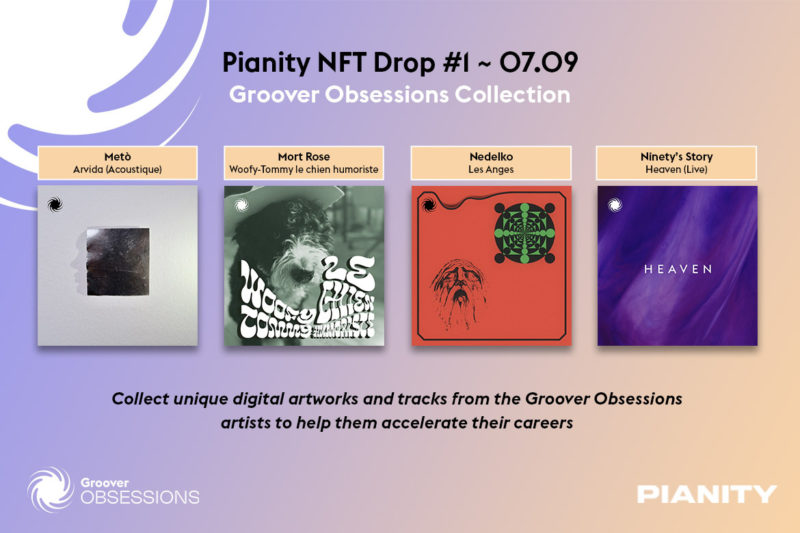
– a collaboration between Groover Obsessions, the artist accelerator of Groover, and Pianity. The artists that were being supported by the accelerator were able to sell NFTs on Pianity.
haumea : And how does one determine the resell price of an NFT ?
Pianity : It’s up to you really ! It’s up to you to decide what you think of the current supply and demand when you want to resell your NFT. If you bought an NFT for 10€ and you see that everyone who bought it is also sold for 10€, it will be difficult for you to sell it for 100€. And it will also depend on the current artist’s status, how famous the song is at the moment, and more. When you decide to sell your Beatles vinyl on eBay, you’re the one you decides for how much you’re going to sell it. The same goes for NFTs. And the point behind NFTs it’s to recreate your music library, because for now, with streaming platforms, you don’t and can’t own the music you listened to, you just have the right to listen to it.
hauméa : And how much does an NFT cost on Pianity ?
Pianity : The unique edition is always up for auction. The following editions’ price will depend on the final price of the auction, but we also have “drops” for which the price will be fixed before it’s up on the marketplace. In both cases we work hand in hand with the artist, we guide them through the entire process. You’ll find NFTs for 20€, but also NFTs for thousands, even tens of thousands of euros.
hauméa : And do you also guide NFT buyers ? Because I know that for platforms like Rarible or Opensea, you have to open a wallet, already own cryptocurrency, and since it is not very easy to do so for a person who has no idea how cryptocurrencies work, it can turn off potential buyers.
Pianity : On Pianity it cannot be easier : you can buy NFTs with your credit card. We wanted from the get go to make NFT purchases as easy as possible and we wanted to allow everyone to be able to buy them. And we knew very well that having a wallet (a cryptocurrency bank account, editor’s note) is something that may stop people from buying. So, on Pianity, you can buy an NFT with your credit card, as well as with cryptocurrencies.
When you create an account on Pianity, you open a wallet, and you can transfer cryptocurrencies if you already own some. Or you can buy your NFT directly with your credit card. The price are always displayed in euros and in dollars for that matter. It is going to change though : we will display prices in various cryptocurrencies later on, but for now, you pay in euros with your credit card.
And on Pianity, you have no additional “gas fee” to pay when you buy an NFT. This is one of the reasons why we chose Arweave as a blockchain ; it is a blockchain that has an environmental impact that is 100 to 1000 times less important than Ethereum, which means that when you buy your NFT for $20 for example, you won’t have to pay an additional $50 for gas fee.
hauméa : And how is Pianity made for, artists & labels wise ? Do you only want to work with independent artists and labels, for example ?
Pianity : No, we want to work with everyone. We have been talking with all the majors, we have been talking with many labels, but what we know is that it is the independent side of the music industry that will benefit the most from this new technology. Well-known artists are already making money with their streams, their live shows, and they will of course make money with NFTs. But the difference is that small artists who currently barely earn anything from streaming services like Spotify will be provided with with a larger source of income thanks to NFTs and it will allow them to take their creative decisions a lot more freely.
hauméa : That being said, and this is a discussion I had with Sylvain Morton, the head of distribution of IDOL : he was telling me that NFTs are a very good thing – they are interested in them at IDOL, Jacques’ NFT operation shows it – but it won’t change much for emerging artists who haven’t acquired a real audience yet. Do you guide these emerging, new artists before they launch an NFT on Pianity ?
Pianity : We indeed guide them on how to sell an NFT, and on how to promote it efficiently. We’ve been giving them access to different communication channels, we provide them with different communication assets and for social networks ; since we’ve been gathering more and more artists, we can no longer do it for everyone.
But we do support them, by firstly inviting them to join our Discord channel. We have lots of artists who promote their music and chat with NFT collectors. Discord is great for that because they can tag the artist with whom they want to chat ; it’s even more direct than Twitter, Instagram, or even Facebook. There is a real sense of community, people will share their collection, they will share their music tastes, they will discuss them… And we ourselves in the team are in direct contact with the community, since we use Discord to make our announcements. And this sense of community, in Web 3.0, is huge. When you look at how it was before, an artist produced their music, went on tour to meet their audience and grow it at the same time, and became famous that way. Today, with social network, it works the other way around : you gather a community around yourself and then you release your music. And this sense of community is essential for NFT sales because it is all about monetizing your fanbase. And in order to do so, you have to let them know your story, make them understand why they should support what you do. We have put aside the “top down” communication scheme that we had on Instagram or Twitter for example.
hauméa : And do you thing this new NFT-based business model is going to reshape the music industry ? We see a lot of sales of jpeg files, MP3 files, but also the rise of new blockchain-based platforms like Audius or Royal… how much of an actual change will NFT bring to the music industry ?
Pianity : I think it’s going to completely change the business model of the entire music industry. Until now, we were in a sort of business model where all tracks, EPs, albums are worth the same price. With the blockchain technology, we really give the power back to the artists, we allow them to choose the format, to set the price of their music, to choose how many copies they’re going to sell… it’s a new form of independence.
And on top of that, today, artists are kind of forced to release their music on Spotify, and based on Spotify’s terms and conditions. And if you look at the evolution of music formats, songs are getting shorter and shorter because people like to skip songs and because you have to accumulate a lot of streams in order to make a living off your music. So, obviously, there’s nothing stopping artists from making 10-minute long songs, but the reality is that if you want to make money, you have to make shorter songs. With NFTS, you are no longer obliged to do so. You can do anything you want. The artist decided what the song, the description, the price, the number of editions there is going to be. I think it’s a profound & positive change. And since there is a lot more artists now, and since the question of the artists’ income has not been answered properly yet, the NFT business model answers that, in my opinion.
Read the first part of our report series on NFTs : Music & blockchain – part 1 : will NFTs change how we listen to music for good ?
More information about Pianity can be found on their website. Stay tuned for their next NFT drops on their Instagram account !

